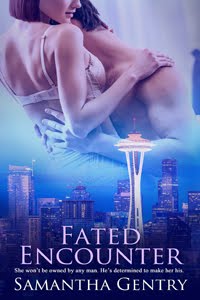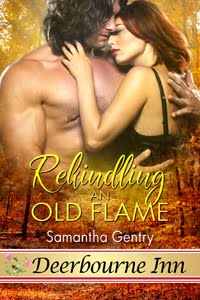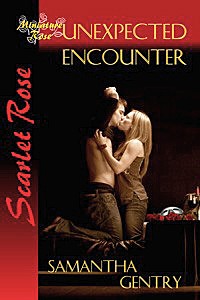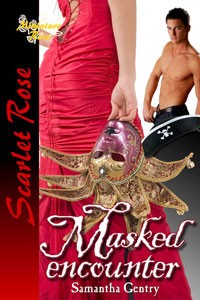Next in my series of Halloween season blogs, I'm delving
into the history of haunted houses—sharing some real haunted houses and a few
miscellaneous Halloween facts.
I remember when I was a child in West Los Angeles. We had a
very large, over-sized garage and one year my mother and father fixed it up
like a haunted house for my Halloween party—a winding, twisty route through all
kinds of scary things. It was a lot of fun and totally different from anything
anyone else in the neighborhood did for Halloween. Of course, back in those
days scary things were not at all the same type of bloody gruesome attractions
that are the main features of today's professional Halloween attractions.
Rather than featuring today's horror images, they dwelled on innocent/fun
ghosts and goblins.
Halloween attractions have moved far beyond the neighborhood
scare as a fun encounter for the trick-or-treaters. Today they are big
business—very big business. Operators of the large attractions spend most of
the year coming up with new and better ideas for frightening horror attractions
and implementing them. They take pleasure in dreaming up even more diabolical
ways of giving us the seasonal nightmares.
Let's talk about the history of haunted houses and some
Halloween facts. Just in the United States, there are over 1200 professional
haunted houses, 300 theme parks that operate horror-themed annual Halloween
events and over 3000 charity-run spooky Halloween attractions. Haunted attractions have a long history
dating back to early civilizations.
Ancient Times:
The Egyptians knew that the best way to keep body snatchers
away from a pyramid was to really scare them away. The commonly used mazes,
moving walls, self-opening doors, and traps as well as snakes and insects to protect
their treasure and the bodies of royalty. True, they weren't charging admission
and the public wasn't lined up waiting to get inside, but it is an early
example of creating a setting to produce fear.
The Greeks and Romans have a folklore complete with mazes
and labyrinths filled with monsters. With theater being a vital part of their
culture, we can assume they created numerous special effects devices to enhance
the scare factor that would evolve into today's haunted house elements.
The Dark Ages:
This period in history saw the Christians continue the
evolution toward today's haunted house attraction. During the 1300s through the
1500s, Europe had been converted from Celtic and pagan religions to the
practice of Christianity. Many of today's Halloween activities—carving
pumpkins, bobbing for apples, dressing up in costumes, and even
trick-or-treating—were pagan practices that stayed with us.
The Renaissance:
Theater became increasingly popular and catered to society's
love of horror which resulted in the development of more special effects.
Ghosts, demons, the devil, and other monsters appeared regularly in plays
including those of William Shakespeare.
The 1800s:
This was a time when the general population became
fascinated with ghosts and the possibility of other realms. Self-proclaimed
mediums, fortune tellers, clairvoyants, and spiritualists engaged in conjuring
sessions in an attempt to communicate with the dead which became a form of
entertainment for the elite. The theme of hauntings continued in the theater
and the century provided the first wax museum, the forerunner of future
walk-through attractions that played on people's sense of reality.
The 1900s:
The start of the 20th century saw the increased popularity
of the traveling carnival and the rise of what was referred to as a freak show.
Dark rides also became popular amusements. The patrons sat in a boat or on a
train and were automatically moved through numerous scenes. Amusement parks
came into popularity during this time. Those that could not afford a big roller
coaster offered cheap fun houses and haunted house attractions to pull in
customers.
Also during this time, many of the residential houses built
during the early 1800s had become dilapidated and run down. Adults would tell
their children that ghosts filled the neglected homes in an attempt to keep
them from exploring those structures. This further fueled the mystique of
haunted houses.
The 1960s:
In 1969, Disneyland (Anaheim, California) opened its Haunted
Mansion attraction. Rather than putting
a genuine decrepit-looking structure in the middle of Disneyland, they created
a lavish mansion with a pristine exterior based on the appearance of the San
Jose, California, Winchester House. It
was originally a walk-through attraction but was soon changed over to a ride.
The 1970s:
Non-profit organizations began to use abandoned buildings
and fields to put up haunted houses to raise money for charity.
The 1980s:
This was the decade when horror movies grew in popularity
and so did haunted houses. Most amusement parks had a scary attraction of some
sort.
The 1990s to present:
Haunts are everywhere—haunted hayrides, mazes, and scavenger
hunts. They've become so popular that haunts are here to stay with the industry
constantly evolving with new and more terrifying attractions.
Real Haunted Houses (that have not been turned
into inns or hotels):
Winchester Mystery House/San Jose, California:
The Winchester Mystery House is a 160-room Victorian mansion
brimming with bizarre architectural features and a very eerie origin. With
features such as secret passageways, labyrinth-like winding hallways and a seance
room, this eccentric house is rumored to have been built for and by spirits
themselves.
The Amityville House/Amityville, New York:
In 1974, six members of the DeFeo family were found slain in
this home; eldest son Ronald DeFeo Jr. was later convicted of murdering his
parents and siblings. A year later, the Lutz family moved in but quickly moved
out after reports of unexplained paranormal activity—strange odors, unexplained
cold drafts and an apparition that took the form of a demonic pig-like creature.
The White House (yes, the residence of the President of the
United States)/Washington D.C.:
For years there have been reports that the White House is a
hotbed of haunted activity. Visitors, staff, and even White House residents
have reported seeing the ghosts of Abraham Lincoln, Abigail Adams, and Andrew
Jackson, to name a few. FDR, Dwight Eisenhower, and Winston Churchill are among
those who claimed to have seen the ghost of Abraham Lincoln. More recently, the
Obamas claim to have repeatedly heard strange sounds and felt a sensation of
someone gnawing at their feet in the middle of the night.
The Joshua Ward House (George Corwin House)/ Salem,
Massachusetts:
Once home to wealthy sea captain Joshua Ward, the Joshua
Ward House was built in 1784. However, its haunted history comes from the fact
that it was built over the original cellar where George Corwin's house once
stood. Corwin was the High Sheriff during the Salem Witch Trials and he took
great delight in torturing confessions from accused witches and warlocks. For
many years, Corwin's remains were housed in the basement, though they
eventually were moved to a nearby cemetery. Rumor has it that Corwin's spirit
still haunts the house along with that of Giles Corey, the only accused he was
unable to force into confessing. He finally crushed Corey to death one large
stone as a time.
The LaLaurie House/New Orleans, Louisiana:
One of the spookiest homes in the French Quarter, the
LaLaurie Mansion was home to Dr. Louis and Delphine LaLaurie, a socially prominent
family in the early 1830s. Rumor has it that Delphine treated her slaves
brutally, chaining the cook to the stove, chasing another slave girl with a
whip and causing her to jump to her death, and torturing and mutilating many
others in a secret attic room. The house, which was owned by actor Nicolas Cage
from 2007 to 2009, has been haunted by screams of agony coming from the
apparitions of Delphine's slaves ever since.
Franklin Castle/Cleveland, Ohio:
Built in 1865 for the Tiedemann family, Franklin Castle
makes a spooky first impression with its sandstone exterior, round corner tower
and gargoyle embellishments. Those who have been inside the mansion, which is
known locally as the most haunted house in Ohio, claim to have witnessed an
eerie woman in black staring out the tower window, small children crying, and
strange happenings like doors flying off hinges and spinning lights. The
possible cause? Four of the Tiedemann children died in the home, and owner
Hannes Tiedemann was rumored to have killed his 13-year-old niece in a hidden
passage and his mistress in the tower.
The Whaley House/San Diego, California:
Now a museum run by the Save Our Heritage Organization, San
Diego's Whaley House was designated an official Haunted House by the U.S.
Department of Commerce in the 1960s due to frequently heard heavy footsteps of
the ghost of "Yankee Jim" Robinson, who was hung on the property in
1852 before the house was built. Other ghostly sightings include owners Thomas
and Anna Whaley (Anna was reportedly seen by Regis Philbin), and even the
family dog.
Halloween Frightening
and Fun Facts:
Halloween is the second largest commercial holiday in the
U.S., annual revenue exceeded only by Christmas.
Approximately 100 countries celebrate Halloween.
Over 7 billion dollars are spent annually on candy, costumes
and activities in just the U.S.
Approximately 90% of all households with children will
participate in some sort of Halloween activity.
Over 80% of all professional haunted attractions in the U.S.
are operated by a charity or help to benefit a charity of some sort.
Wishing everyone and safe and fun Halloween.














































